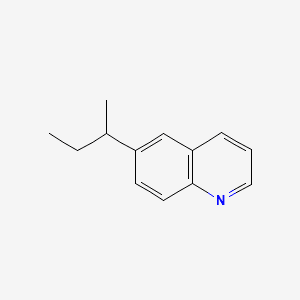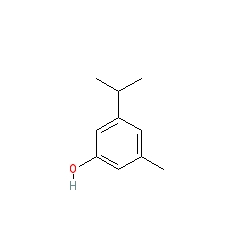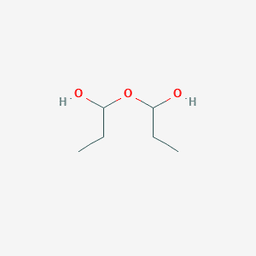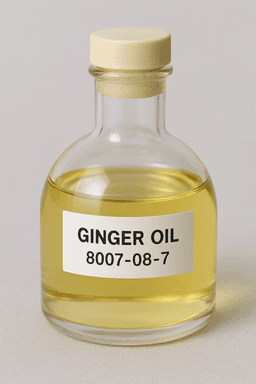

Secondary Butyl Quinoline (SBQ), also referred to as (sec-Butylquinoline and SAP55IYM36), is an aromatic nitrogen containing compound preferred across multiple industries with distinct roles. In industrial applications specifically, SBQ robust structure enables it to form stable chelates with metal ions, making it a great chemical stabilizer in corrosion inhibitors, high-performance lubricants, and thermal oxidation-resistant formulations. On the other hand, under the identifier 6-(sec-Butyl)quinoline, it serves as a synthetic aroma chemical prized for its warm, musky, and subtly animalic scent. SBQ acts as a low-volatility fixative in fine fragrances, home scent compositions, and functional fragrances exhibiting perfect blending compatibility with woody, amber, and leather accords. SBQ is REACH-registered, this dual-use molecule is also favored in olfactory research & specialized chemical synthesis by speciality chemical suppliers and manufacturers.

Secondary Butyl Quinoline (SBQ), also referred to as (sec-Butylquinoline and SAP55IYM36), is an aromatic nitrogen containing compound preferred across multiple industries with distinct roles. In industrial applications specifically, SBQ robust structure enables it to form stable chelates with metal ions, making it a great chemical stabilizer in corrosion inhibitors, high-performance lubricants, and thermal oxidation-resistant formulations. On the other hand, under the identifier 6-(sec-Butyl)quinoline, it serves as a synthetic aroma chemical prized for its warm, musky, and subtly animalic scent. SBQ acts as a low-volatility fixative in fine fragrances, home scent compositions, and functional fragrances exhibiting perfect blending compatibility with woody, amber, and leather accords. SBQ is REACH-registered, this dual-use molecule is also favored in olfactory research & specialized chemical synthesis by speciality chemical suppliers and manufacturers.

.3d8f8f41.svg)
Flavors & Fragrances
.3556d45a.svg)

Fragrance Ingredients


Quinoline Derivatives, Aroma Compounds

Chemical Properties & Specifications
Not classified as hazardous under normal use
May cause mild skin or eye irritation on direct contact Avoid inhalation of concentrated vapors in production environments. Ensure adequate ventilation in closed manufacturing settings
Use personal protective equipment (gloves, goggles) during handling
6-(sec-Butyl)quinoline helps stabilize volatile top and middle notes, extending the longevity of fragrance compositions.
It contributes a warm, slightly animalic nuance to perfumes, enhancing complexity and richness in base accords.
Widely studied in structure–odor relationship analysis for understanding the behavior of quinoline derivatives in scent profiles.
Used in premium candles, diffusers, and scent-releasing materials due to its low volatility and scent-retention properties.
Store in a cool, dry, well-ventilated place, away from heat and light
Industrial: HDPE or steel drums (25–200 kg) Lab-scale: Amber glass bottles (250 mL – 1 L)

CAS No. : 499-75-2
Category : Fragrance Ingredients
Sub-Category : Natural Phenolics & Bioactives
Description: Carvacrol or Antioxine is a natural monoterpenoid phenol primarily found in oregano oil and thyme. I...

CAS No. : 25265-71-8
Category : Fragrance Ingredients
Sub-Category : Glycol-Based Solvent Carriers
Description: Dipropylene Glycol is a clear, low-odor, low-volatility liquid glycol widely used as a solvent, carr...

CAS No. : 8007-08-7
Category : Fragrance Ingredients
Sub-Category : Essential Oils
Description: Ginger oil is a natural essential oil extracted from the rhizomes of the ginger plant (Zingiber offi...

CAS No. : 103-05-9
Category : Pharmaceutical Actives & PrecursorsFragrance Ingredients
Sub-Category : Intermediates & PrecursorsAroma Compounds
Description: Muguet Carbinol (2-Methyl-4-phenyl-2-butanol) is a floral aromatic chemical with lily-of-the-valley ...